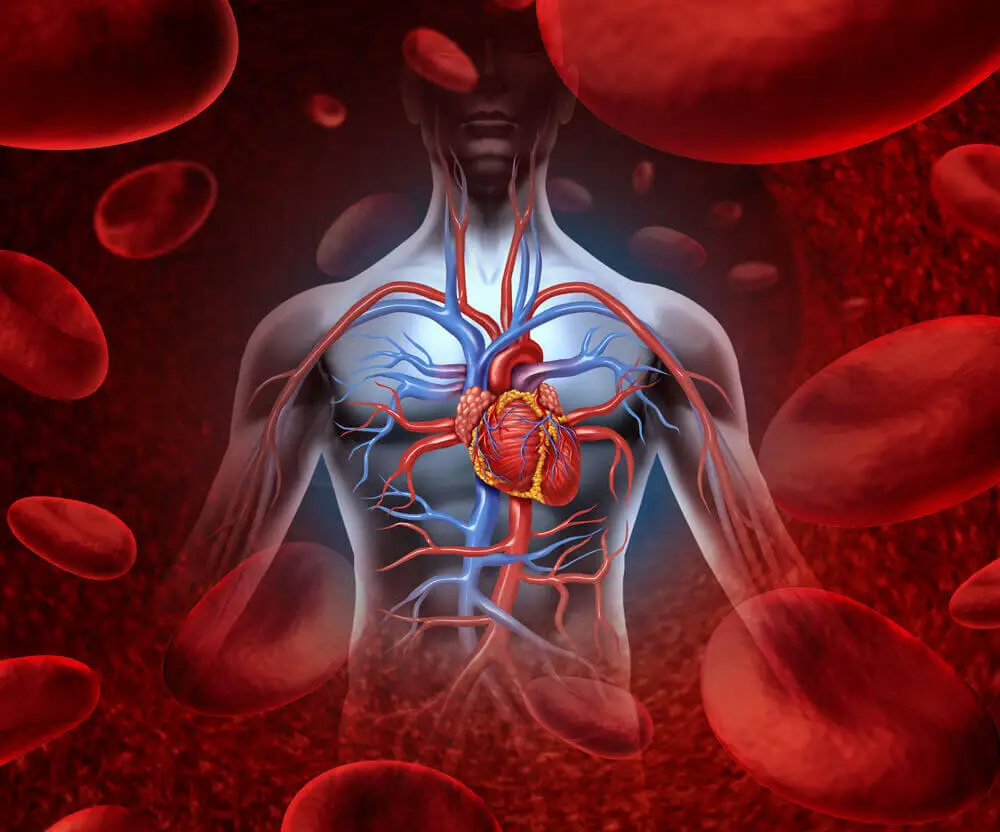Vasculitis: The Disease that Affected Asthon Kutcher's Vision and Hearing


Reviewed and approved by the doctor Leonardo Biolatto
Ashton Kutcher revealed on Running wild with Bear Grylls: The Challenge that he spent a year with vasculitis. This autoimmune condition complicated his vision, hearing, and even Ashton Kutcher’s ability to walk.
It’s a fairly rare, low prevalence condition, encompassing many different variants. Although the actor didn’t clarify what type of vasculitis he had, he commented that it took him almost a year to recover.
Three years ago, I had a rare form of vasculitis, which destroyed my vision, my hearing, and my balance. I’m lucky to be alive. -Ashton Kutcher
What is vasculitis?
The term describes an inflammation of the blood vessels. Here, we can include the arteries, veins, and capillaries, which are the smaller forms of vessels in the circulatory system.
Although the synonym arteritis is sometimes used, the fact is that the latter is the form that is restricted to arteries. Then, as we’ll see later, there are diseases with the same basis that have their own name, since some researchers have defined them more precisely.
Ashton Kutcher’s vasculitis was autoimmune in nature, as is the case with all these disorders. This means that the immune system attacks the blood vessels without recognizing them as its own tissue.
What may vary is the starting point that triggers the reaction. In this regard, it’s known that the autoimmune attack can be triggered by a bacterial or viral infection, by going through cancer, or as an allergy.
In one way or another, once vasculitis has taken hold, the blood vessels become inflamed and shrink in diameter. In the medium term, less blood can circulate within them, reducing the oxygen supply to the tissues.

Symptoms
Depending on the area affected, there will be different symptoms. According to Ashton Kutcher’s account, his vasculitis involved vision, hearing, and balance problems.
We assume that the inflamed arteries and veins in the actor were located in the central nervous system. That location could explain the conjunction of ocular, hearing, and gait disorders.
However, in addition to the punctate signs, there are people who have general symptoms due to vasculitis. These are more difficult to identify and do not help to guide the diagnosis, as they could respond to different diseases:
- Fever
- Weight loss
- Tiredness and fatigue
- Muscle and joint pain
We think you may be interested in reading this, too: 5 Things You Should Know About Autoimmune Diseases
Some types of vasculitis
As we mentioned earlier in this article, there’s not a single type of vasculitis, and we do not know which one affected Ashton Kutcher. Bearing this in mind, let’s take a look at some of the best-known varieties of this disease.
Behcet’s syndrome
This type of vasculitis is concentrated in the mouth and skin. It manifests with blisters and sores that take over the gum, the mucosa of the reproductive organs, and sometimes the eye. It’s also commonly accompanied by arthralgias (joint pain).
Patients are usually between 20 and 30 years of age and of some ethnic descent. According to statistics, it’s more frequent among Middle Eastern citizens, so a genetic component is suspected.
Buerger’s disease
This disease is also called thromboangiitis obliterans. It tends to be located in the arteries of the upper and lower limbs.
It has been found to be more frequent among smokers. The hypothesis is that the toxic substances in cigarettes generate an autoimmune reaction that leads to inflammation of the vessels.
The risk of gangrene is high. Patients may notice reduced circulation to their hands and feet, leading to reduced oxygen supply and subsequent tissue death.
Some people who suffer from this disease end up with amputations.
Cryoglobulinemia
The strange mechanism of cryoglobulinemia still has no precise explanation. What we do know is that the cryoglobulins (antibodies in the blood) of the people with this disease thicken at low temperatures.
The abnormal cryoglobulins bind to each other and block blood flow. As a result, vessels swell throughout the body. Symptoms range from skin manifestations to kidney failure.
Some forms of cryoglobulinemia have been found to be triggered by leukemia. Others follow infection with the hepatitis C virus.
Like this article? You may also like to read: What Exercises does Jennifer Lopez Include in Her Routine to Maintain a Slim Figure?
Kawasaki disease
This vasculitis is more typical in childen. In addition to vasculitis, affected children have generalized inflammation of their lymph nodes.
The greatest risk is that the arteritis is concentrated in the coronary vessels, which carry blood to the heart muscle. In any case, most patients recover if they receive prompt treatment within the first week of symptom onset.
Characteristic symptoms are as follows:
- Persistent high fever
- Conjunctivitis without discharge
- Swollen and red tongue
- At least one enlarged lymph node in the neck
- Inflammation of the skin with desquamation, especially in the hands and feet

How did doctors treat Ashton Kutcher’s vasculitis?
The actor has not disclosed the details of his treatment. Much of vasculitis is approached in the same way, with similar medications aimed at stopping the autoimmune attack.
Among the therapeutic options available are the following:
- Corticosteroids: Methylprednisolone is one of the preferred drugs to prescribe in these cases. However, its adverse effects limit its long-term use, and there are diseases that constitute a contraindication (such as diabetes).
- Immunomodulators: There are many different types of drugs that regulate the immune system. Azathioprine and cyclophosphamide are classic options, although we can also mention thalidomide and interferons.
Could Ashton Kutcher’s condition return?
There are medical reports of vasculitis recurrence. This means that a person can go through the symptoms he or she has already had again, even if years have passed since the first episode.
It’s possible that the treatment chosen may play a role in the relapse. The same is true for the factors that triggered the problem the first time.
Be that as it may, it turns out that the patient has antibodies capable of attacking his arteries again if they receive the appropriate stimulus. This is why people with vasculitis, like Ashton Kutcher, should continue to have regular follow-ups and complementary methods to assess their overall health.
If this is your case because you identify symptoms or think something is wrong with your blood vessels, don’t hesitate to consult a doctor. It has been proven that an early approach can help reduce complications.
All cited sources were thoroughly reviewed by our team to ensure their quality, reliability, currency, and validity. The bibliography of this article was considered reliable and of academic or scientific accuracy.
- Chanussot-Deprez, Caroline, et al. “Etiología de las vasculitis cutáneas: utilidad de una aproximación sistémica.” Gaceta Médica de México 154.1 (2018): 62-67.
- Fuller, Martha Grant. “Kawasaki disease in infancy.” Advanced Emergency Nursing Journal 41.3 (2019): 222-228.
- Geetha, Duvuru, et al. “Comparisons of guidelines and recommendations on managing antineutrophil cytoplasmic antibody–associated vasculitis.” Kidney International Reports 3.5 (2018): 1039-1049.
- Jaén, Marcia Pérez. “Enfermedad de Buerger tromboangitis obliterante.” Revista Médica Sinergia 2.08 (2018): 7-10.
- Mera-Flores, Ronny, et al. “Síndrome de Behcet, revisión de la literatura.” Ciencia Digital 2.3 (2018): 616-632.
- Retamozo, Soledad, Luca Quartuccio, and Manuel Ramos-Casals. “Crioglobulinemia.” Medicina Clínica (2022).
- Rúa-Figueroa Fernández de Larrinoa, Iñigo, and Celia Erausquin Arruabarrena. “Tratamiento de las vasculitis sistémicas asociadas a ANCA.” Reumatol. clín.(Barc.) (2010): 161-172.
- Seo, Philip, and John H. Stone. “Large-vessel vasculitis.” Arthritis care and research 51.1 (2004): 128-139.
This text is provided for informational purposes only and does not replace consultation with a professional. If in doubt, consult your specialist.








